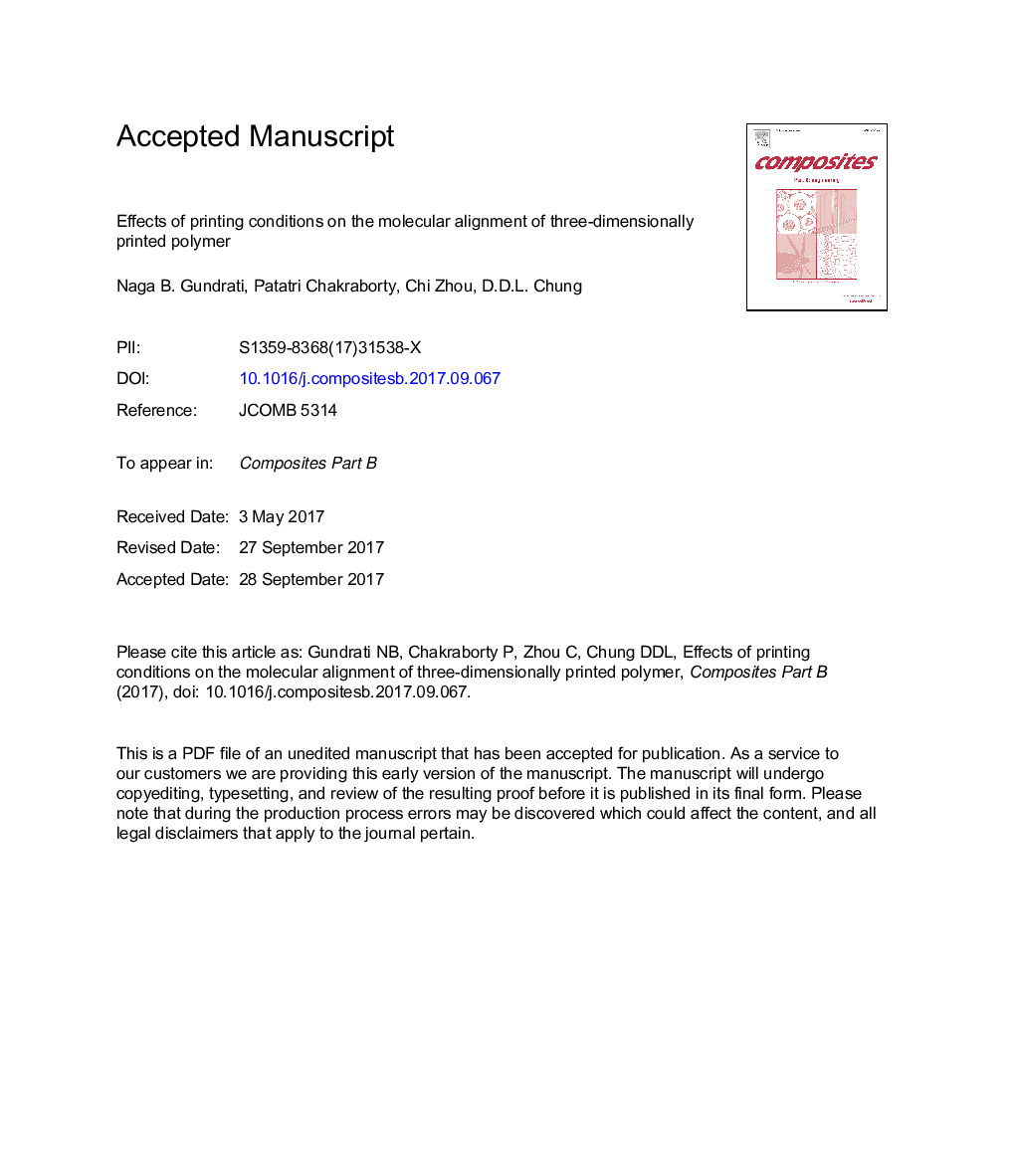| Article ID | Journal | Published Year | Pages | File Type |
|---|---|---|---|---|
| 7212386 | Composites Part B: Engineering | 2018 | 23 Pages |
Abstract
Three-dimensional polymer printing involves layer-by-layer deposition, so preferred in-plane molecular alignment occurs. Bottom-up stereolithography is used with an ultraviolet-curable acrylate ester resin. The out-of-plane relative electric permittivity (4.1-4.3) increases slightly with decreasing layer thickness (50-25 μm), due to the increased molecular alignment. All values are above the value (3.5) for the bulk polymer. The permittivity decreases with increasing curing time, due to molecular networking. It decreases with increasing light intensity, due to enhanced curing. Increase in the resin age increases the permittivity, due to the hindrance to curing. The permittivity decreases with increasing aging time after printing, due to post-curing.
Keywords
Related Topics
Physical Sciences and Engineering
Engineering
Engineering (General)
Authors
Naga B. Gundrati, Patatri Chakraborty, Chi Zhou, D.D.L. Chung,
